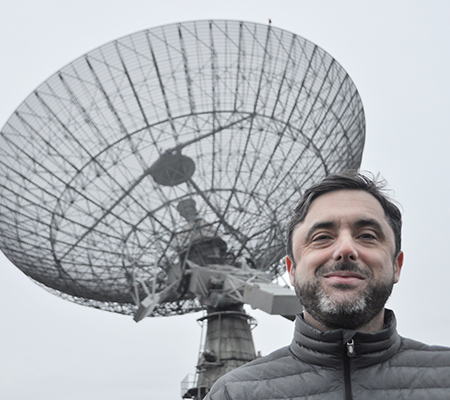Wants to develop a space telescope that can study gamma-ray bursts from black holes

Black holes have long fascinated humans and sparked curiosity about the cosmos and science. Black holes are created when a massive star collapses; its birth is revealed as an intense flash of gamma rays in the sky. Mark Pearce, professor of physics at KTH Royal Institute of Technology, wants to develop a cutting-edge gamma-ray space telescope to study how black holes are created in the universe and how a huge amount of energy is released.
"Gamma-ray bursts are the most energetic explosions in the universe, releasing as much energy in a few seconds as the sun generates in a billion years," he says.
Measurements will have a higher diagnostic value
The telescope will consist of electronic X-ray detectors and X-ray optics. A unique feature will be able to determine the degree of polarisation of gamma rays, which means that measurements will have significantly higher diagnostic value than is possible with today's telescopes.
Parts of the technology have previously been developed at KTH and tested in space using huge research balloons launched from the Esrange space station outside Kiruna. The next step would be to use a small satellite to carry out observations over a much longer period from orbit.
"It would be very exciting to tackle big scientific questions using a national infrastructure," says Mark Pearce.
One of the challenges in developing the space telescope is developing technology compatible with a small satellite. The technology must be compact, have low mass and power, generate manageable amounts of data, and withstand the severe vibrations during launch and the temperature fluctuations in orbit.
The extreme physical environment around a black hole, such as high temperature and gravity, means that it is possible to study how matter and radiation behave in a way that is not possible on Earth.
"Discoveries in basic research have benefited society in the past in ways that are very difficult to predict," says Mark Pearce.

The technology must be compact
Gamma-ray astrophysics is a very active field of research, and today, Mark Pearce and his colleagues are collaborating with groups in several locations around the world. And thanks to the research already done at KTH on balloon-borne instrumentation, expertise has been built up in measuring the polarisation properties of gamma rays.
"Being able to measure the polarisation of gamma-ray bursts means that a space telescope from KTH would be groundbreaking and unique in the research landscape," says Mark Pearce.
